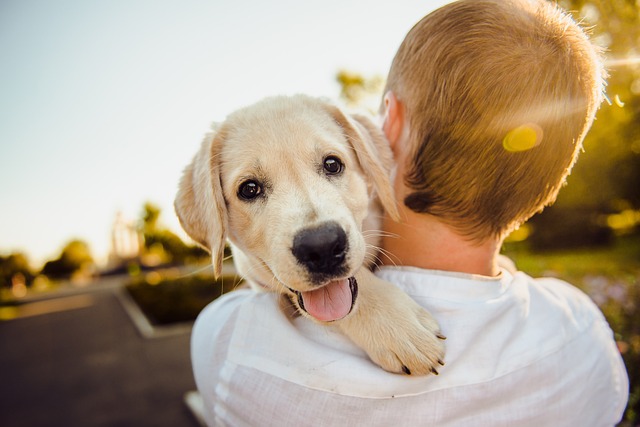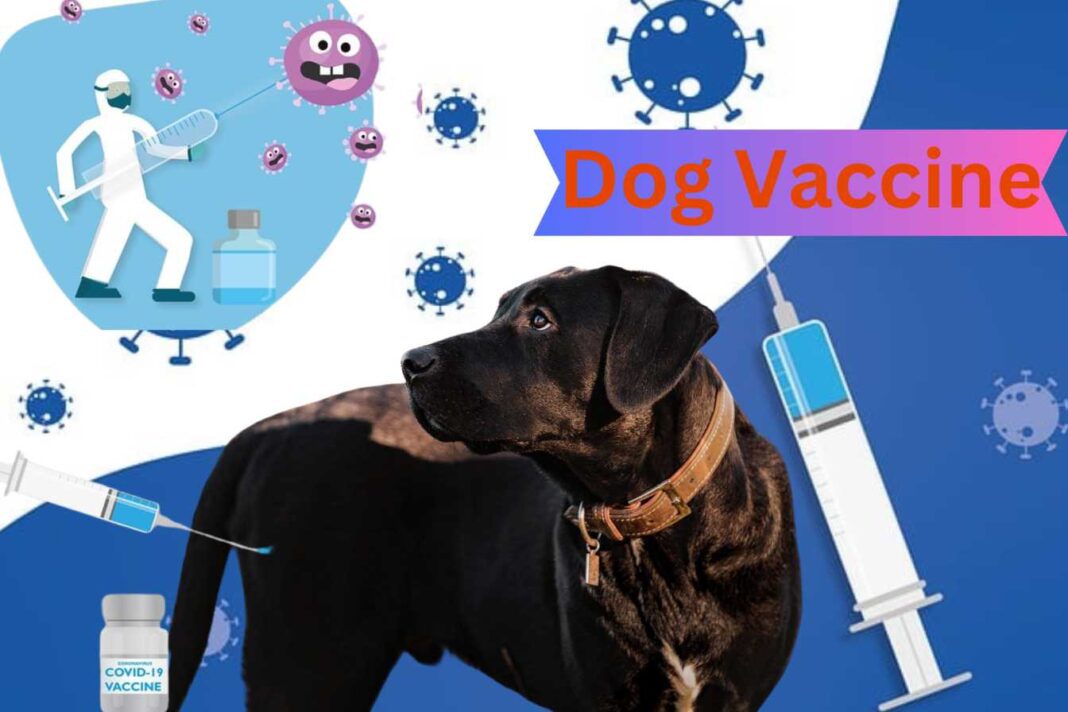9-in-1 Dog Vaccine:Vaccinations play a vital role in ensuring the health of our beloved pet companions. The easiest way to do this is to get a 9-in-1 dog vaccine. This vaccine protects our pet dogs from a number of diseases, making it a popular choice among pet owners and veterinarians.
What is the 9-in-1 Dog Vaccine:
The 9-in-1 vaccine for dogs is a vaccine that aims to provide a combined vaccination for nine serious diseases. It includes vaccines for diseases such as canine distemper, canine ehrlichiosis, and canine influenza, protection against these diseases is provided through a single injection for easy vaccination. This vaccination is very beneficial for a dog at a high risk of being exposed to various pathogens.
Diseases Covered by the 9-in-1 Dog Vaccine:
The importance of this vaccine can be appreciated by knowing what diseases it protects against. Listed below are the nine diseases that the 9-in-1 dog vaccine has listed protection for:
Canine Distemper- This virus affects a dog’s respiratory, digestive, and nervous system and is highly contagious. Symptoms include an absence of appetite, lethargy, vomiting, and bloody diarrhea.
Canine Adenovirus Type 1 (Hepatitis)– This virus attacks the liver, kidneys, and the eyes, ruining them with severe organ damage.
Canine Adenovirus Type 2– She is mainly associated playing and concerning herself with respiratory infections and kennel cough.
Parvovirus-
A severe disease of the digestive system resulting in vomiting, diarrhea, and sometimes fatal dehydration. Symptoms are vomiting, diarrhea, weight loss, fever, and an absence of appetite.
Danger-
Horribly dangerous for puppies between the age of six weeks and up to six months and for dogs that are yet to be vaccinated.
Treatments-
A SNAP test can be done by analyzing a stool sample of the dog and interpreting it for a parvo antigen by a veterinarian, after which the treatment can then commence.
This respiratory virus is parainfluenza; kennel cough is caused by this virus which spreads very fast.
Symptoms of Parainfluenza
Dry cough: Dry or low-pitched raspy cough; often compared to a “goose cough”, or feeling like there is something stuck in the throat
Sneezing: The dog starts sneezing; they sneeze a lot more than usual due to the irritation in their airways caused by the virus.
Nasal irritation: There may be clear or thick nasal discharge due to the virus attacking the upper respiratory tract.
Eyes irritation: Red; swollen; discharge in case of eye infection.
Fever: Low or moderate fever which is part of the defense in the body to fight infection affects the dog.
Fatigue: The dog often seems more tired or lethargic than usual when suffering under the effects of the virus.
Loss of appetite: The dog may eat less or have a complete disinterest in food due to the illness.
You should never ignore the symptoms, timely treatment can make the dog’s condition better.
Leptospirosis (4 types):
It contaminates water by urine released from infected animals and can damage the liver and kidneys.
Symptoms of Leptospirosis:
The early signs are common to those affected by some other diseases, such as:
Loss of appetite: The dog will not touch food.
Fever: Increase in body temperature.
Lethargy: The dog appears more tired and weak than usual.
Upset stomach: Digestion may include vomiting or diarrhea.
Apart from all these, there may be some specific symptoms:
Jaundice: Paleness in color, skin and eyes become yellow.
Changes in urine:
The urine may also become darker in color or decrease in quantity.
These symptoms can become very serious if proper attention is not given. Timely treatment is very important.
Canine Coronavirus: is a virus that attacks mainly the digestive system in dogs. Diarrhea is the most common symptom, and it may or may not be severe. The stomach pain, loss of appetite, vomiting-all these can occur in the dog. This virus spreads very fast, especially when there is contact with other dogs. And it is a very easy disease to treat if early diagnosis and treatment are provided.
While risks differ from disease to disease, 9-in-1 vaccines against each given disease are very robust in providing protection.
Benefits of the 9-in-1 Dog Vaccine:
Convenience and Speed
Convenience is perhaps the most significant advantage of the 9-in-1 canine vaccine; its main advantage is that, as opposed to scheduling eight other vaccination dates just to protect your pet from nine diseases, one vaccination suffices. Less hassle gets stressful visiting from multiple veterinarian visits over time.
Maximum Protection
The 9-in-1 dog vaccine is employed to protect your dog entirely, which means vaccination against nine different diseases. City dog, park-going dog, or country wanderer – this important vaccine covers it all and gives you assurance that your pet is safe from the most significant common diseases.
Reduced Stress for Dogs
Most dogs wait in the office for their next appointment with the veterinarian. Not only do they face fewer injections, but they also experience less stress and discomfort during the process of being vaccinated.
When Should Your Dog Receive the 9-in-1 Vaccine:
The immunization modalities are determined by the age, health status, and exposure risk a dog has. Usually, puppies are given the core vaccines between six to eight weeks of age, followed by booster shots every few weeks until around 16 weeks of age. Among these is the 9-in-1 vaccine, and an annual booster dose maintains the immunity.
The immunization schedules are based on the age, health condition, and exposure risk of a dog. Dogs receive core vaccinations at an age of about 6 to 8 weeks while the boosters follow every 2 or 3 weeks, until reaching the 16th week of their lives. Among those boosters is the 9-in-1 dog vaccine, and the dog receives annual booster immunizations thereafter to keep it immune.
Potential Side Effects and Risks:
Just like all other vaccines, the 9-in-1 dog vaccine has mostly mild and transient reactions- these could include soreness in the injection site, slight fever, and lethargy. Rare but serious reactions include allergic responses such as swelling, vomiting, or difficulty in breathing.
If any unusual symptoms appear post-vaccinating your dog with the 9-in-1 dog vaccine, you should call your veterinarian immediately. They can help determine whether this is just an after-effect of the vaccine or if something more serious is taking place.
Why Choose the 9-in-1 Dog Vaccine:
Fit for High-Risk Dogs
Dogs that get into contact with many animals: kennels, dog parks, and doggy daycare have a relatively higher risk of coming into contact with multiple infections. The 9-in-1 vaccine for dogs provides a larger margin of coverage thereby suitable for these places.
Peace of Mind for Owners
Knowing that your dog has been vaccinated for nine major diseases means a great deal of peace for most of the owners. This vaccine reduces your dog’s chances of getting any dangerous infection, allowing you to enjoy free and easy time with your pet.
Money-Maker Solution
The 9-in-1 dog immunization may now cost twice the price of all the single vaccines put together, but it is often cheaper in the long run. Consolidating several vaccines for one uses up less money on a pet owner’s additional visits to the vet.
Important Considerations Before Vaccination:
Your vet will look into the health status of your dog before giving a 9 in 1 dog vaccination. Age, conditions, lifestyle: these are what will be evaluated concerning the total appropriateness of the application of this vaccine.
The Youngest Ones and the Oldest Dogs
Incorporate the 9 in 1 dog vaccination into the first vaccine schedule for any puppy brought into a new household. Older dogs, on the other hand, may need a more individualized approach depending on their health and vaccination history.
Dogs With Allergies or Other Health Problems
Whenever a dog has any history of allergies or has any ongoing health problems, consult your veterinarian for advice. He may also suggest other ways to vaccinate in safety for your dog.
Post-Vaccination Care Tips:

It is important to watch for any side effects after the administration of the 9-in-1 dog vaccine on the dog. Strong environmental comfort is obligatory and availability of fresh water and food is paramount. If the dog appears uncomfortable, gentle activity and rest can help for quick recovery.
9-in-1 Dog Vaccine Price and Information:
In India:
A 9-in-1 dog vaccination such as Nobivac DHP Ultrasound can be priced at around ₹900 to ₹1,500 per shot. The cost varies depending on the vaccine company and the medical center as well as your city. Some places might offer discounts; hence, it is advisable to check with the local veterinarians.
In the US:
This Dervet Canine Spectra 9 vaccine will cost you around $16.79 a dose and could be found in stores like Fleet Farm. However, not everywhere has this available, and sometimes it could be purchased only from the store directly.
Why is this vaccine a must-have vaccine?
Such vaccine brings so many threats simultaneously, saves your pet dog’s lives, and for the reservation place of nine bests in a single package is stolen and kept hostage.
Find the right information and contact the pet veterinarian for your dog’s care.
Final Thoughts: Is the 9-in-1 Dog Vaccine Right for Your Pet:
Pet vaccination has been made easy with the invention of the 9-in-1 vaccine. It is so efficient that an owner need not bother about having one or more vaccines for their pets to cover multiple diseases. In fact, it is the most hassle-free and most convenient option, while also being the most cost-effective. Yet, the necessity for consulting with a veterinarian stands unexplainable regarding whether that vaccine fits the particular needs of a dog.
In addition, the time for knowledge and action can be used to clear all possible ways for best protection for each pet dog towards getting ready for a happy life.



